Smart City
Scroll Down
Smart city urban development
Besides creating buildings, public spaces, and transport infrastructure, urban development is an action to solve the challenges the society is facing. It simultaneously provides new work style, living environment, communities, and more to workers, occupants, and and visitors.
Conventionally, the main themes of planning were the environment, energy saving, and CO2 reduction, but since the Great East Japan Earthquake in 2011, the IoT and Big Data are expected to be used alongside of sustainable progress in whole cities, to make business and living environments safer, more comfortable, and more convenient.
CATEGORY
RELATED EXPERTISE
Providing Smart Energy Networks
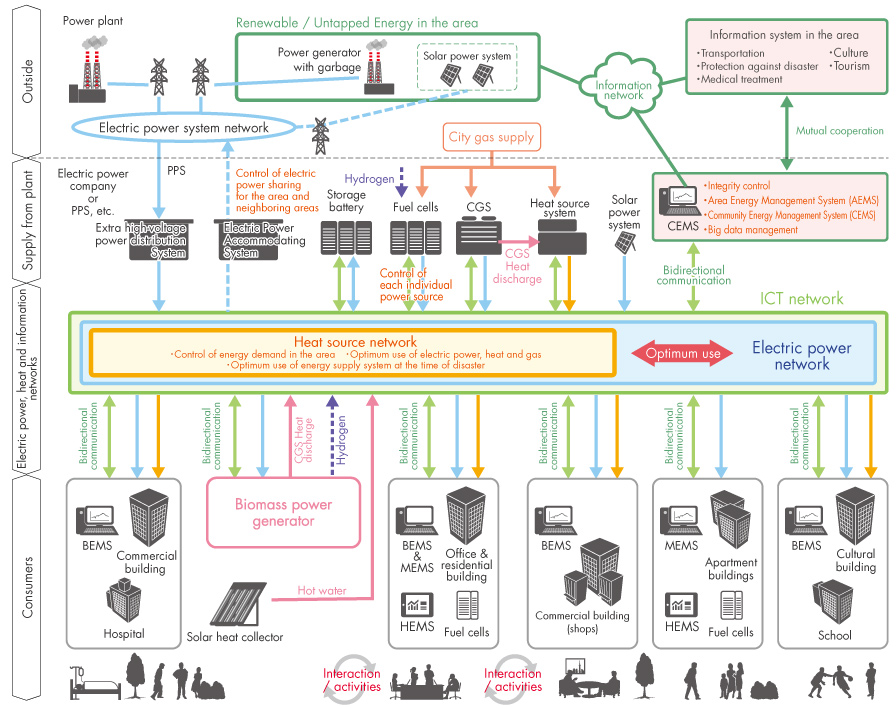 Smart Cities
Smart Cities
Onsite energy is renewable energy, such as generation from solar, wind, and biomass, and the use of geothermal heat. Autonomous energy is co-generation using city gas etc. Energy savings can be described as passive design, which makes maximum use of nature, in forms such as light, wind, rain, heat, soil, and greenery. Smart Energy is a framework for a new age of energy, to make optimal and efficient use of these energy types throughout urban areas.
CEMS (Community Energy Management System) was introduced for energy and CO2 saving, as it predicts supply and demand on the supplier and the customer, practices demand control, and optimizes energy supply and demand for the whole urban area. Huge power outage due to natural disasters such as earthquakes and typhoons are becoming more threatening to people, and they are expecting Smart Energy to provide functions which would allow them to maintain a minimum level of daily life and work even when the power supply is out.
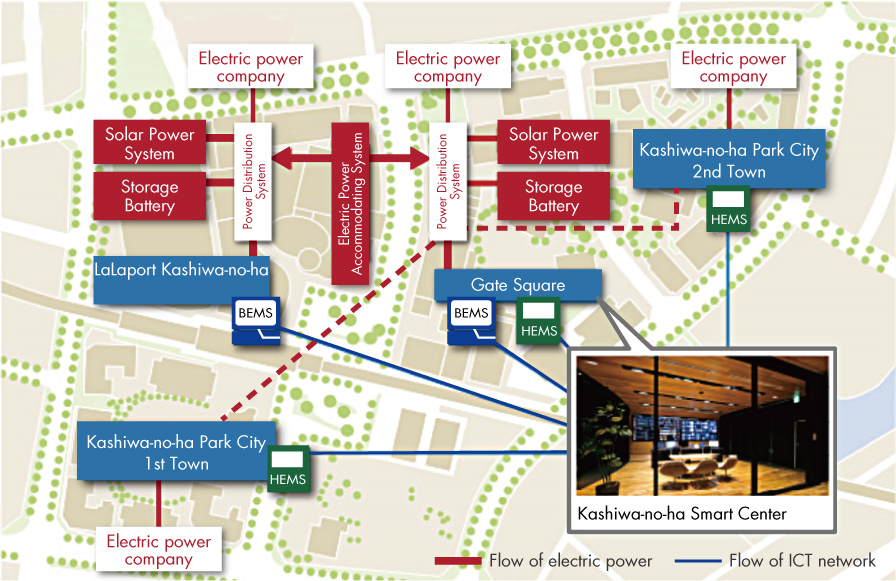 Conceptual diagram of the Kashiwa-no-ha smart grid
Conceptual diagram of the Kashiwa-no-ha smart grid
For example, if part of the emergency power supply owned by a commercial facility or office building can be supplied to the elevators in residences or meeting halls in the event of a regional power outage, it will assure safety, relief, and convenience for the entire district. Securing backup energy can be expected to form communities oriented towards self-help, mutual help, and public help, and to lead to livelier communication in the entire district.
In Smart Cities, reduction of environmental loads in public transport is also an important element, along with power supply. Measures including rental cycles, car sharing, LRT (Light Rail Transit) as next-generation trams, and TOD (Transit Oriented Development), in which stations are centered in the development are implemented to develop more compact cities and improve their environments.
-
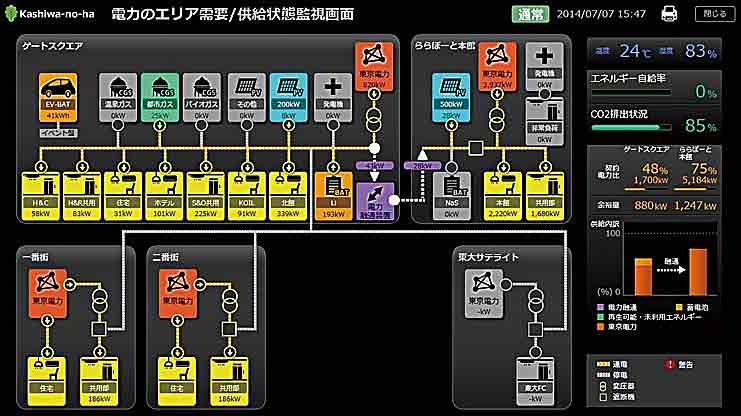 Conceptual diagram of Kashiwa-no-ha area energy management system
Conceptual diagram of Kashiwa-no-ha area energy management system
-
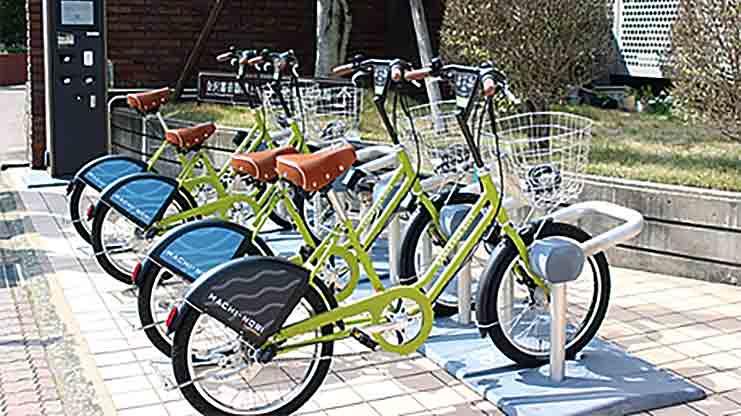 Kanazawa City urban development for rental cycles
Kanazawa City urban development for rental cycles

Smart Grid Strengthens Urban Disaster Prevention Potential
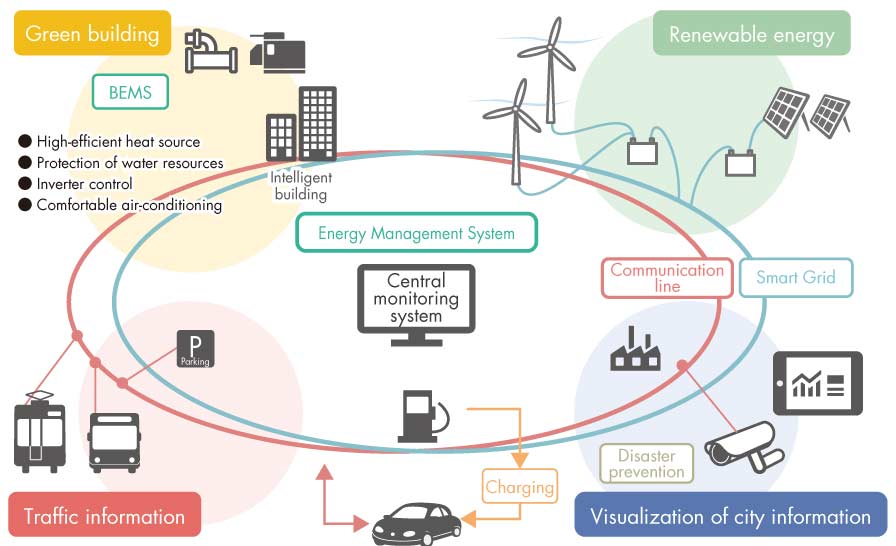
A Coordinator Is Essential for Power Sharing
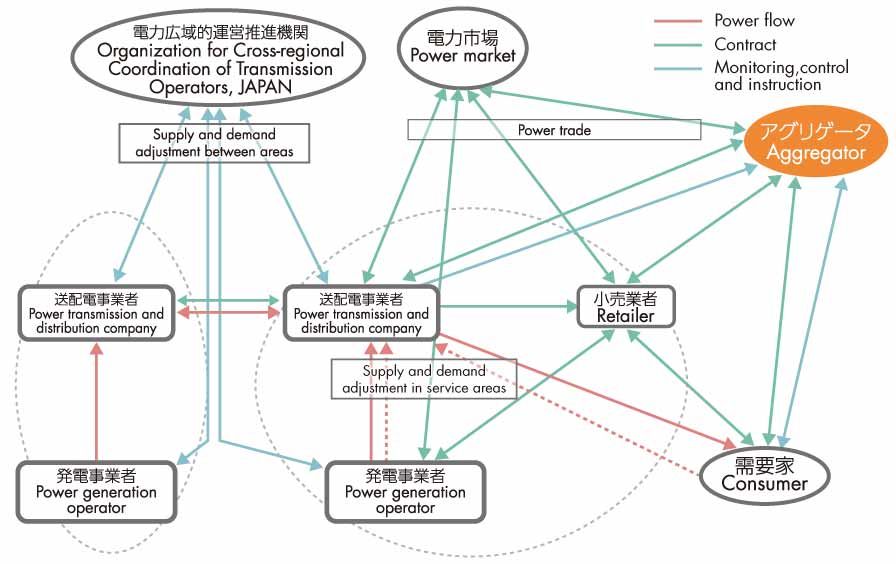 Power supply and demand coordination instruction network
Power supply and demand coordination instruction network
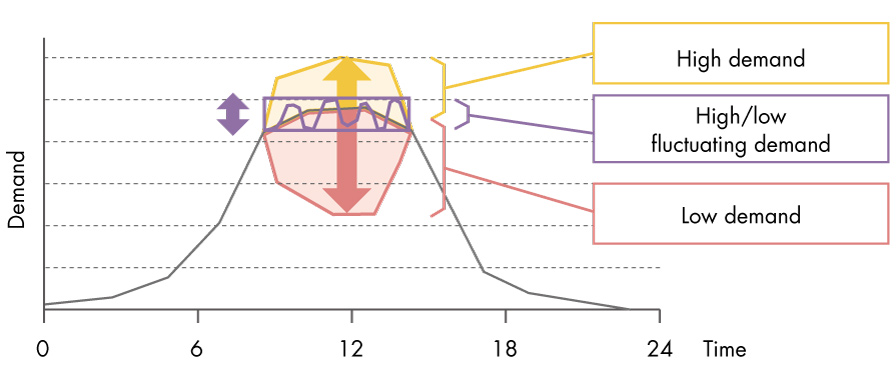 Image of demand response power control
Image of demand response power control
The Negawatt Trading Markets Changes Power Supply Equipment

Buildings and Infrastructure for a Hydrogen Society
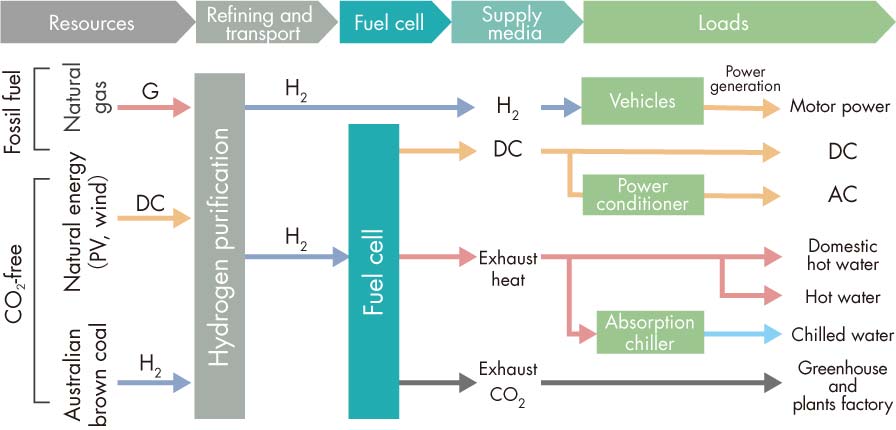 Flow of hydrogen usage
Flow of hydrogen usage
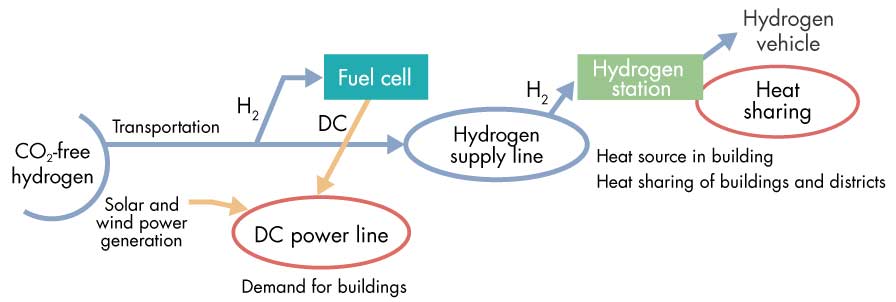 Grids of hydrogen, heat, and DC
Grids of hydrogen, heat, and DC
Local Production and Local Consumption of Energy
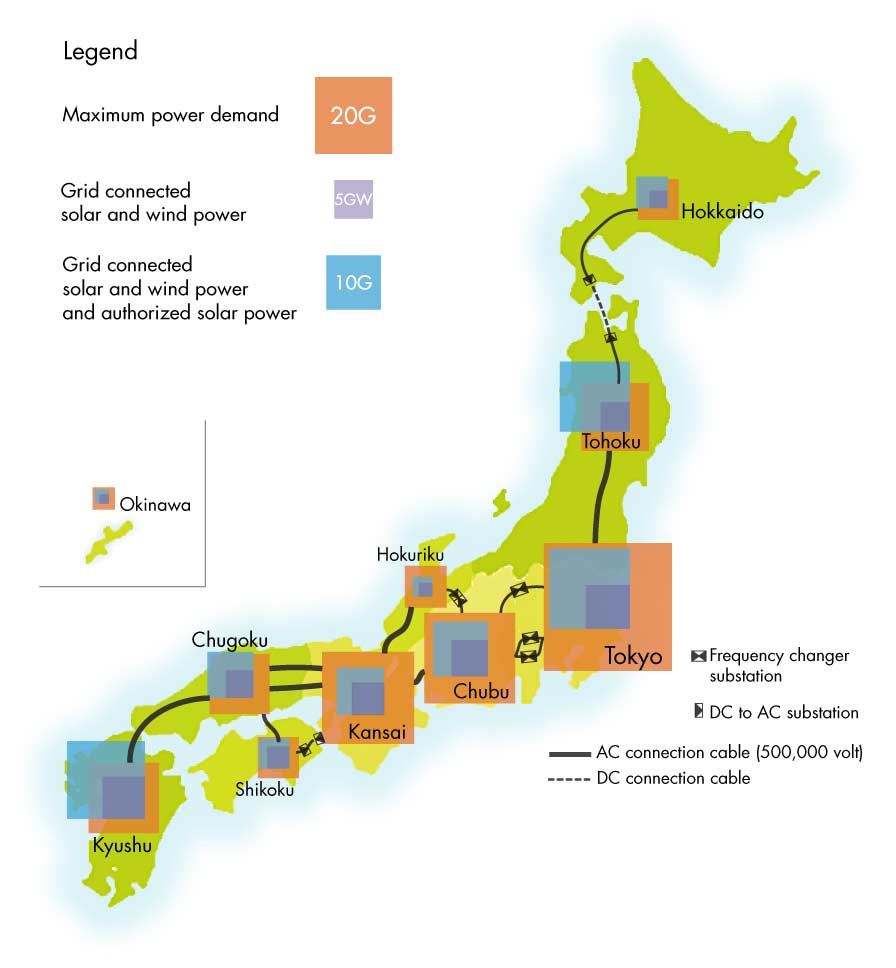 Power supply and demand coordination network,
Power supply and demand coordination network,
Ratio of renewable energy against maximum power demand
Large Buildings Supply Emergency Power
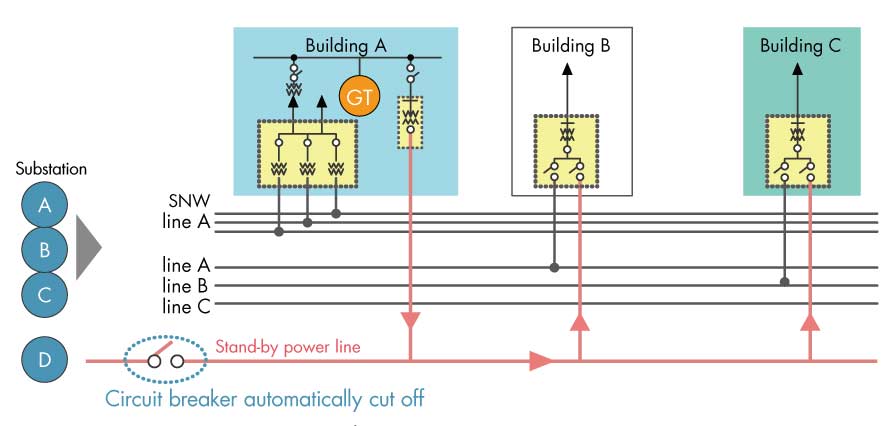
Sharing Idle Assets Makes Cities More Convenient
-
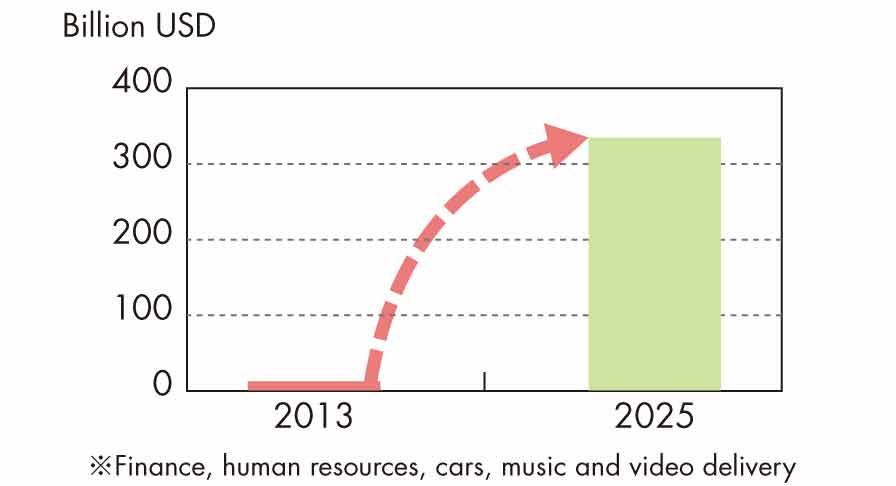 Market size of sharing economy tempor
Market size of sharing economy tempor
-
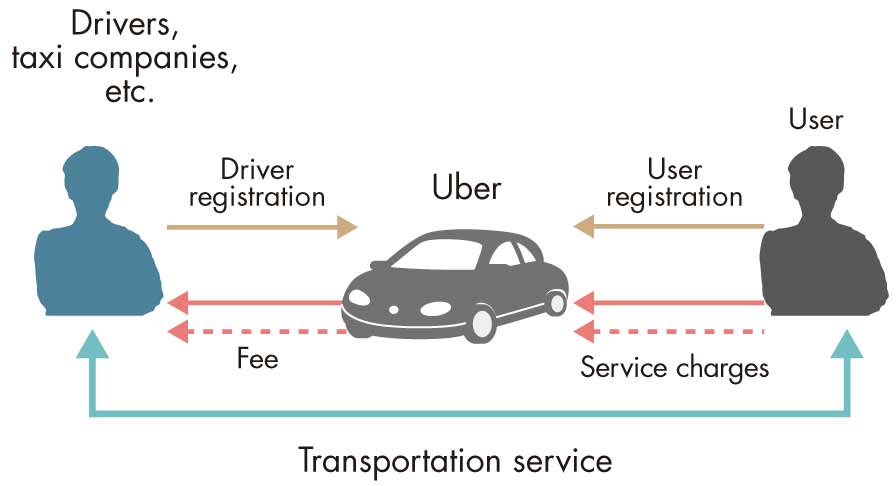 Illustration of Uber service tempor
Illustration of Uber service tempor